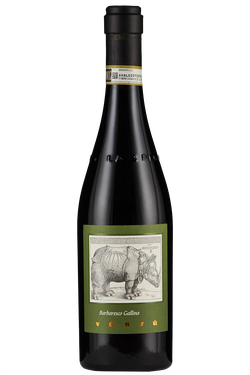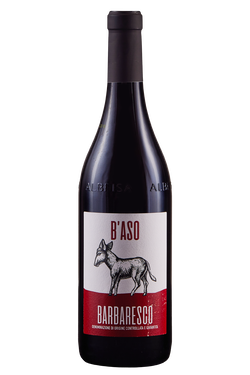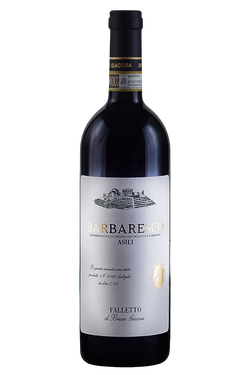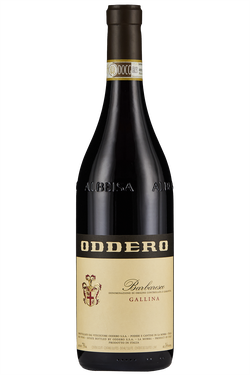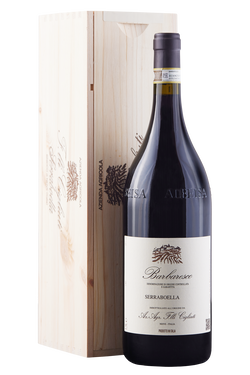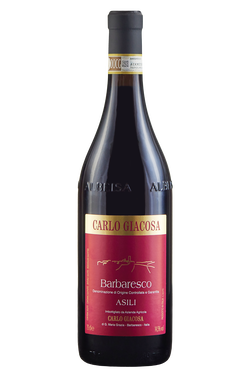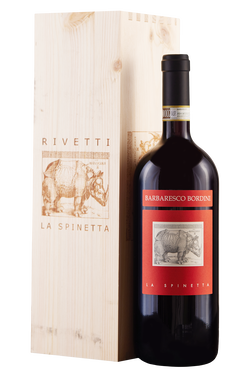Barbaresco: wine of excellence
As mentioned, Barolo shares the same grape variety as Barbaresco. However, the latter stands out for its more popular and traditional flavour. Apparently, its history dates back to Roman times when Nebbiolo was planted in place of oak trees. However, at that time, Nebbiolo was only grown for the production of Barolo. The first bottle that confirmed the actual production of Barbaresco dates back to 1894 produced by Domino Gavazza, director of the Regia Scuola di Enologia di Alba (Alba wine school). Domino Gavazza also tried to promote Barbaresco abroad until his death, by creating the Consorzio di Tutela del Barolo e Barbaresco (consortium for the protection of Barolo and Barbaresco) in 1934. Barbaresco’s base is 100% Nebbiolo and it is only permitted in areas which have DOCG designation, specifically the municipalities of Treiso, Neive and Barbaresco. The typical characteristic of Barbaresco is due to both the grape variety and the clay-rich, draining, sloping terrain. Production of this wine is controlled: in fact, it is only permitted to grow 80 quintals per hectare using the Guyot training and pruning method. The DOC designation was awarded in 1966 while the DOCG was some years after in 1980.
Characteristics of Barbaresco
Barbaresco is a wine with a low alcohol content, around 12.5%. The ABV can however vary by one or two percent depending on the vintage and the ageing phase in the wine cellar. This process, as with the cultivation and production, is also only allowed in areas with DOCG designation. Barbaresco has different ageing periods depending on the desired product: first, there is a minimum of 26 months, nine of which are spent in wooden barrels, and 48-50 months, with a further nine in barrels, for Barbaresco Riserva. This wine has excellent cellarability and a great margin for ageing: it can in fact be stored in the wine cellar for a period of 8-25 anni, depending on the vintage. Its typical character comes from Nebbiolo grapes which acquire different characteristics depending on the production area. This is in fact why the Nebbiolo grape variety has been divided up into areas for Barbaresco so as to create 75 different zones, and this additional information can be included after the main designation. These zones are known in Piedmontese as “sorì”. The most famous of these include Rabajà, Martinenga, Sorì Tildin, Costa Russi, Roncagliette, Asili and Sorì San Lorenzo.
Tasting and pairings
Thanks to the low altitude of its vineyards and a higher temperature, the musts of Barbaresco are less concentrated and the ripening is shorter as a result. Barbaresco is a very firmly structured wine. It has a pale yet transparent ruby colour, typical of the Nebbiolo grapes, with garnet reflections at a younger age and orange reflections with longer ageing. On the nose, it is a fruity wine, with fine, complex and elegant notes. It is reminiscent of rose, cherry, wild strawberry, violet, liquorice and white pepper. One of its main characteristics is its bold, long length. It goes perfectly with typical game-based dishes from the area, stews, braised meats and casseroles. Mature cheeses are also a great pairing, as well as truffle-based recipes, a typical element of the area of the Langhe and Cuneo. It is a distinctly autumnal or winter wine, to be consumed with meals combining traditional Piedmontese recipes such as stews, polenta, soups and minestrone.
Barolo and Barbaresco: differences
Although these two wines are made from 100% Nebbiolo and produced exclusively in areas of Denominazione Geografica Controllata, the differences between these two Piedmontese wines are fairly clear. Specifically, there are 11 production areas of Barolo wine and only three of Barbaresco. This difference in territory also concerns the Nebbiolo grapes, the result of which varies greatly depending on the soil, climate and temperature variation. Although they are only a few kilometres apart, Barbaresco and Barolo have completely different tasting profiles. Another difference relates to ripening. As mentioned, Barbaresco has a shorter ripening period compared to its relation Barolo, which requires a minimum of 38 months, including eight in wooden barrels. As well as the most important recognition, that of DOCG which was obtained in the late 1980s, Barbaresco has earned some important titles, especially in the last ten years, such as Premio Tre Bicchieri 2020 and Tastevin Vitae 2021. Among the vintages of this excellent wine, 2015 and 2016 stand out.



